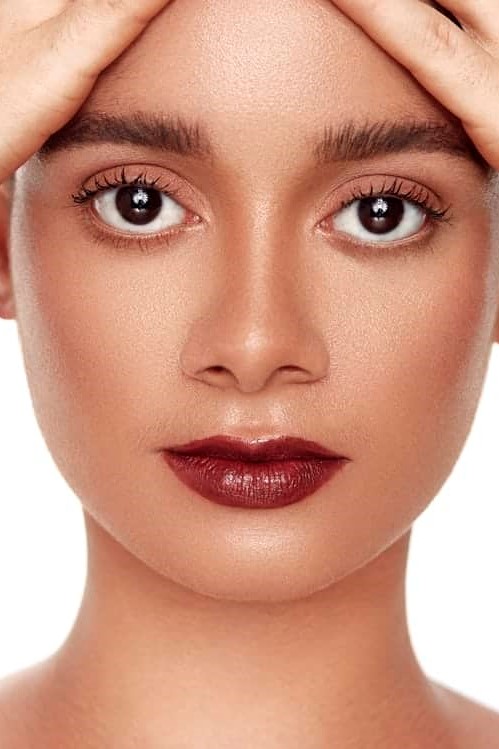By Emily-Rose Njonde
Posted on August 6, 2021
The concept of Black unity, the notion that all Black people are united by their complexion is one of the founding principles of “Blackness.” Unfortunately, this notion could not be further from the truth. It is not only our Blackness, but the shade of it that dictates our treatment in society. Black people with lighter skin tones have a long-documented history of receiving preferential treatment, dating back to the enslavement of Black peoples. This bias that offers lighter skinned people of color societal privileges is called colourism. While stemming from white supremacist ideals, colourism is now ingrained and upheld in many Black communities. This ideal has led to the erasure of dark-skinned women in modern media, dark-skinned Black people in professional industries and an international disdain for dark skin.
Colourism for Black women in North American media
Media is extremely influential. Despite the belief that cinematic and artistic productions are simply to be taken as fiction, they often have real life impacts. Everything from fashion trends to common vernacular can shift based on art. The same can be said for racial perceptions. The constant misrepresentation of specific groups can be detrimental to said groups in real life. If the only “worthy” Black women presented by artists are lighter skinned, the same thought processes occur for the everyday person offscreen. The concepts presented on screen are internalized and then projected into how real people view real dark skin women.




Black people are often grouped together as one homogenous group, and representation for one is considered representation for all. The problem is that not Black people are being represented. The shade of this representation is extremely important to note. When observing most media products that do contain Black people, one could easily see that the overwhelming majority of Black women portrayed are light-skinned. While the presence of dark-skinned Black men is common, their female dark-skinned counterparts hardly ever share their complexion. This is a direct result of colourism.
Light-skinned Black women are still considered Black; therefore, they can fill a diversity quota, be the token and participate in anti-racism episodes while also fitting the conventional European beauty standard. If every Black woman on screen looks the exact same, the problem of lack of representation for Black women has not been solved, but simply repackaged so that the realities of dark-skinned women are erased. One of the main arguments against colourism is division: to say that light skin representation is not Black representation is to marginalize an already marginalized group. It is to continue demanding more beyond what those who are being represented think we deserve. As Ronald E. Hall writes in Racism in the 21st Century, “the truth is that Black Americans may very well live in the same society, but their life experiences may vary greatly depending on whether or not one is light or dark-skinned.” Black women on screen currently exist in a monolith; they are not given much room to experience different things and play different characters. When dark skin Black women are on screen, they are typically side characters and seen as unattractive and undesirable. They are depicted as being loud, annoying and the butt of most jokes. This is in contrast to their light skin counterparts, who often play main characters and love interests. Studies have shown that “African Americans are still considered more attractive by others if they have fair skin.” Thus, light-skinned people’s proximity to whiteness promotes the idea that the lighter you are, the closer to being conventionally attractive you are; therefore, dark skin Black women do not benefit from this ideology.
Audrey Elisa Kerr writes that “proximity to whiteness [allows for] access and opportunity.” Compared to the dark skin Black woman, a light skinned person’s proximity to whiteness distances her from the traditional derogatory stereotypes placed on Black women, making them more palatable. This dark skin erasure can be especially detrimental to young girls. As a child, a lot of one’s self esteem and worth can come from media representation. Constantly seeing beauty presented in a singular form can lead to internalized self-hatred for a lot of young girls. It can also lead to self-doubt for young girls who do not fit the box that the media has created for dark skin girls.
Black Men and Colourism
A binary opposition between the perceptions of whiteness as good and blackness as evil has become ingrained into Black culture, to a point where light-skinned Black people have been given positive characteristics, while darker skinned Black people are attributed negative characteristics. Colourism also works against dark skin Black men but in different ways. While characteristics such as strength and aggression that are usually associated with dark skin is praised socially in men, it can work against them in professional industries. However, it is important to note that those same characteristics are also placed on dark skin women, thus making them more susceptible to being victims of violence in social situations and disliked in professional ones.
Colorism in professional industries
Colourism is pervasive. It impacts many different areas of life. “Fair-skinned African Americans still fare better economically, vocationally, and educationally. Their family income is more than 50% greater than dark-skinned African Americans and their personal income is 65% greater than that of dark-skinned African Americans.” Colourism stretches much further than attraction and representation. The deep history behind colourism has influenced almost all employment industries to prefer lighter skinned individuals, putting people with darker skin at an extreme disadvantage.
Colorism on a global scale
While it may be easy to comprehend colourism in a western context due to white supremacist beauty ideals, it may be more complex to do so in countries where the majority of the population is Black. Colonialism fed the false narrative that Eurocentric features are the beauty standard all over the world. In many Asian countries, darker skin is associated with poverty whereas lighter skin represents wealth. Lightness is also sought after in many African countries as well. These countries were socialized through western influences and thus came to idealize these concepts in their societies. The notion that westerners are a standard they should all strive to become is ingrained very deep in certain minds, so much so that many extreme measures are used to attain this beauty ideal. While this can be seen with many things such as hair relaxers and code switching, skin altering treatments are very common. There is a well-documented use of skin bleaching products throughout many countries in Africa and Asia. “A study of traders in the Lagos State of Nigeria revealed a prevalence of skin bleaching: 27.6 per cent in men and 49.7 per cent in women.” These dangerous procedures that many people put themselves through are a direct result of colourism.
Colourism is not divisive but the result of division. The classification of the standards of beauty and worth among Black people was created during enslavement and is still present today. This negative influence will not go away by simply being ignored. It is important to be a vocal advocate about diversity in representation across all media forms so that together, we can dismantle this oppressive hierarchy.
References
Hall, R. E. (2008). Racism in the 21st century : an empirical analysis of skin color. Springer. https://doi.org/10.1007/978-0-387-79097-8
Hall, R. E. (2013). The melanin millennium : skin color as 21st century international discourse. Springer. https://doi.org/10.1007/978-94-007-4608-4
Kerr, A. E. (2006). The paper bag principle : class, colorism, and rumor and the case of black washington, d.c (1st ed.). University of Tennessee Press.

